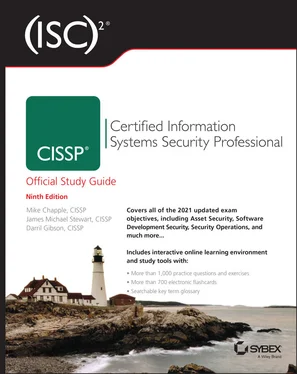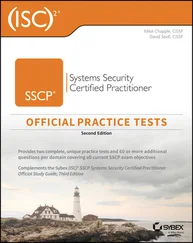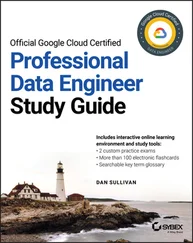The first BIA task facing the BCP team is identifying business priorities. Depending on your line of business, certain activities are essential to your day-to-day operations when disaster strikes. You should create a comprehensive list of critical business functions and rank them in order of importance. Although this task may seem somewhat daunting, it's not as hard as it looks.
These critical business functions will vary from organization to organization, based on each organization's mission. They are the activities that, if disrupted, would jeopardize the organization's ability to achieve its goals. For example, an online retailer would treat the ability to sell products from their website and fulfill those orders promptly as critical business functions.
A great way to divide the workload of this process among the team members is to assign each participant responsibility for drawing up a prioritized list that covers the business functions for which their department is responsible. When the entire BCP team convenes, team members can use those prioritized lists to create a master prioritized list for the organization as a whole. One caution with this approach—if your team is not truly representative of the organization, you may miss critical priorities. Be sure to gather input from all parts of the organization, especially from any areas not represented on the BCP team.
This process helps identify business priorities from a qualitative point of view. Recall that we're describing an attempt to develop both qualitative and quantitative BIAs simultaneously. To begin the quantitative assessment, the BCP team should sit down and draw up a list of organization assets and then assign an asset value (AV) in monetary terms to each asset. These values form the basis of risk calculations performed later in the BIA.
The second quantitative measure that the team must develop is the maximum tolerable downtime (MTD), sometimes also known as maximum tolerable outage (MTO). The MTD is the maximum length of time a business function can tolerate a disruption before suffering irreparable harm. The MTD provides valuable information when you're performing both BCP and DRP planning. The organization's list of critical business functions plays a crucial role in this process. The MTD for critical business functions should be lower than the MTD for activities not identified as critical. Returning to the example of an online retailer, the MTD for the website selling products may be only a few minutes, whereas the MTD for their internal email system might be measured in hours.
The recovery time objective (RTO) for each business function is the amount of time in which you think you can feasibly recover the function in the event of a disruption. This value is closely related to the MTD. Once you have defined your recovery objectives, you can design and plan the procedures necessary to accomplish the recovery tasks.
As you conduct your BCP work, ensure that your RTOs are less than your MTDs, resulting in a situation in which a function should never be unavailable beyond the maximum tolerable downtime.
While the RTO and MTD measure the time to recover operations and the impact of that recovery time on operations, organizations must also pay attention to the potential data loss that might occur during an availability incident. Depending on the way that information is collected, stored, and processed, some data loss may take place.
The recovery point objective (RPO) is the data loss equivalent to the time-focused RTO. The RPO defines the point in time before the incident where the organization should be able to recover data from a critical business process. For example, an organization might perform database transaction log backups every 15 minutes. In that case, the RPO would be 15 minutes, meaning that the organization may lose up to 15 minutes' worth of data after an incident. If an incident takes place at 8:30 a.m., the last transaction log backup must have occurred sometime between 8:15 a.m. and 8:30 a.m. Depending on the precise timing of the incident and the backup, the organization may have irretrievably lost between 0 and 15 minutes of data.
The next phase of the BIA is the identification of risks posed to your organization. During this phase, you'll have an easy time identifying some common threats, but you might need to exercise some creativity to come up with more obscure (but very real!) risks.
Risks come in two forms: natural risks and person-made risks. The following list includes some events that pose natural threats:
Violent storms/hurricanes/tornadoes/blizzards
Lightning strikes
Earthquakes
Mudslides/avalanches
Volcanic eruptions
Pandemics
Person-made threats include the following events:
Terrorist acts/wars/civil unrest
Theft/vandalism
Fires/explosions
Prolonged power outages
Building collapses
Transportation failures
Internet disruptions
Service provider outages
Economic crises
Remember, these are by no means all-inclusive lists. They merely identify some common risks that many organizations face. You may want to use them as a starting point, but a full listing of risks facing your organization will require input from all members of the BCP team.
The risk identification portion of the process is purely qualitative. At this point in the process, the BCP team should not be concerned about the likelihood that each type of risk will materialize or the amount of damage such an occurrence would inflict upon the continued operation of the business. The results of this analysis will drive both the qualitative and quantitative portions of the remaining BIA tasks.
Business Impact Analysis and the Cloud
As you conduct your business impact analysis, don't forget to take any cloud vendors on which your organization relies into account. Depending on the nature of the cloud service, the vendor's own business continuity arrangements may have a critical impact on your organization's business operations as well.
Consider, for example, a firm that outsourced email and calendaring to a third-party software-as-a-service (SaaS) provider. Does the contract with that provider include details about the provider's SLA and commitments for restoring operations in the event of a disaster?
Also, remember that a contract is not normally sufficient due diligence when choosing a cloud provider. You should also verify that they have the controls in place to deliver on their contractual commitments. Although it may not be possible for you to physically visit the vendor's facilities to verify their control implementation, you can always do the next best thing—send someone else!
Now, before you go off identifying an emissary and booking flights, realize that many of your vendor's customers are probably asking the same question. For this reason, the vendor may have already hired an independent auditing firm to conduct an assessment of its controls. They can make the results of this assessment available to you in the form of a Service Organization Control (SOC) report. We cover SOC reports in more detail in Chapter 15, “Security Assessment and Testing.”
Keep in mind that there are three different versions of the SOC report. The simplest of these, an SOC 1 report, covers only internal controls over financial reporting. If you want to verify the security, privacy, and availability controls, you'll want to review either an SOC 2 or SOC 3 report. The American Institute of Certified Public Accountants (AICPA) sets and maintains the standards surrounding these reports to maintain consistency between auditors from different accounting firms.
Читать дальше












